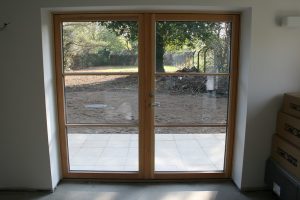 In the United Kingdom, triple glazed windows are still a somewhat new concept. However, in colder countries such as Scandinavia, where homes regularly endure extreme weather in winter, triple glazed windows have been the standard fitment for several years.
In the United Kingdom, triple glazed windows are still a somewhat new concept. However, in colder countries such as Scandinavia, where homes regularly endure extreme weather in winter, triple glazed windows have been the standard fitment for several years.
The UK might not get the same severity of weather conditions as Scandinavia, but it still suffers from harsh winters as well as rising energy costs. You also need to keep in mind that you can insulate your home using other ways such as the floor, walls, and roof. However, neglecting the windows may result in condensation and cold spots.
Benefits of Triple Glazing and U-Values
Installing triple glazing in your home comes with numerous benefits, but the important thing to keep in mind is that all triple glazing is not made equal. There are numerous systems currently available, but to enjoy the maximum benefit, there should be 16mm gaps between the glass panes and they should be filled with argon. Argon is an inert gas that reduces the loss of hat through the panes. A smaller gap reduces the thermal performance of the sealed unit, unless you start using an expensive option such as krypton.
So, in general, 4mm glass with 16mm gaps is the ideal size for a triple glazed sealed unit, which is referred to a 4/16/4/16/4 unit, which is equals 44mm in total. If you simply compare the glass’ U-values and then the comparison between the 44mm triple glazed unit and the 28mm double glazed unit, is massive. The U-value of the typical 44mm unit centre panel is 0.62 while that of the double-glazed unit is 1.1.
Triple Glazing vs. Double Glazing
Triple glazing is quite simply an additional glass pane over a double-glazed unit. However, it enhances the window’s performance in several ways:
- The additional glass pane provides an additional barrier against the cold weather, thus making your home warmer.
- The additional pane also reduces thermal transmittance since there’s an extra spacer bar at the edge of the glass.
- The additional pane also provides an extra layer of security to the window’s glass element. The innermost pane is usually toughened.
- Sound insulation is marginally better than that of a double-glazed unit if glass of similar thickness is used throughout.
- Triple glazed windows usually get the best Energy A++ rating.
What Are the Drawbacks (If Any) of Triple Glazing?
The greatest issue you are likely to have with triple glazing is the external condensation on the glass. It usually happens because the external glass pane isn’t being adequately heated by your house, which means that if the glass drops to a temperature lower than the outside air, you might reach “dew point” thereby leading to the formation of condensation.
It usually happens after a cold clear night and is best described as a light misting, which forms from the centre of the pane. It is actually in the completely opposite place you would expect it to form on the inside. The reason for this is that the glass is in effect being heated through the frame as well as spacer bar, thus ensuring that the glass’ outer edge is warmer than its centre.
Summary
Triple glazing is great and there’s really no reason why you shouldn’t consider it if you are changing your windows. It might cost more now, but it will definitely help to “future-proof” your property in the long tun and you will end up recouping your extra costs courtesy of the energy savings.
Triple glazing will also make your home appear far more attractive to potential buyers in case you ever choose to sell it. Getting a quotation from KJM Group actually does not cost you anything and it can be priced for both ‘A’ rated double glazing and provide an extra upgrade cost to triple glazing.